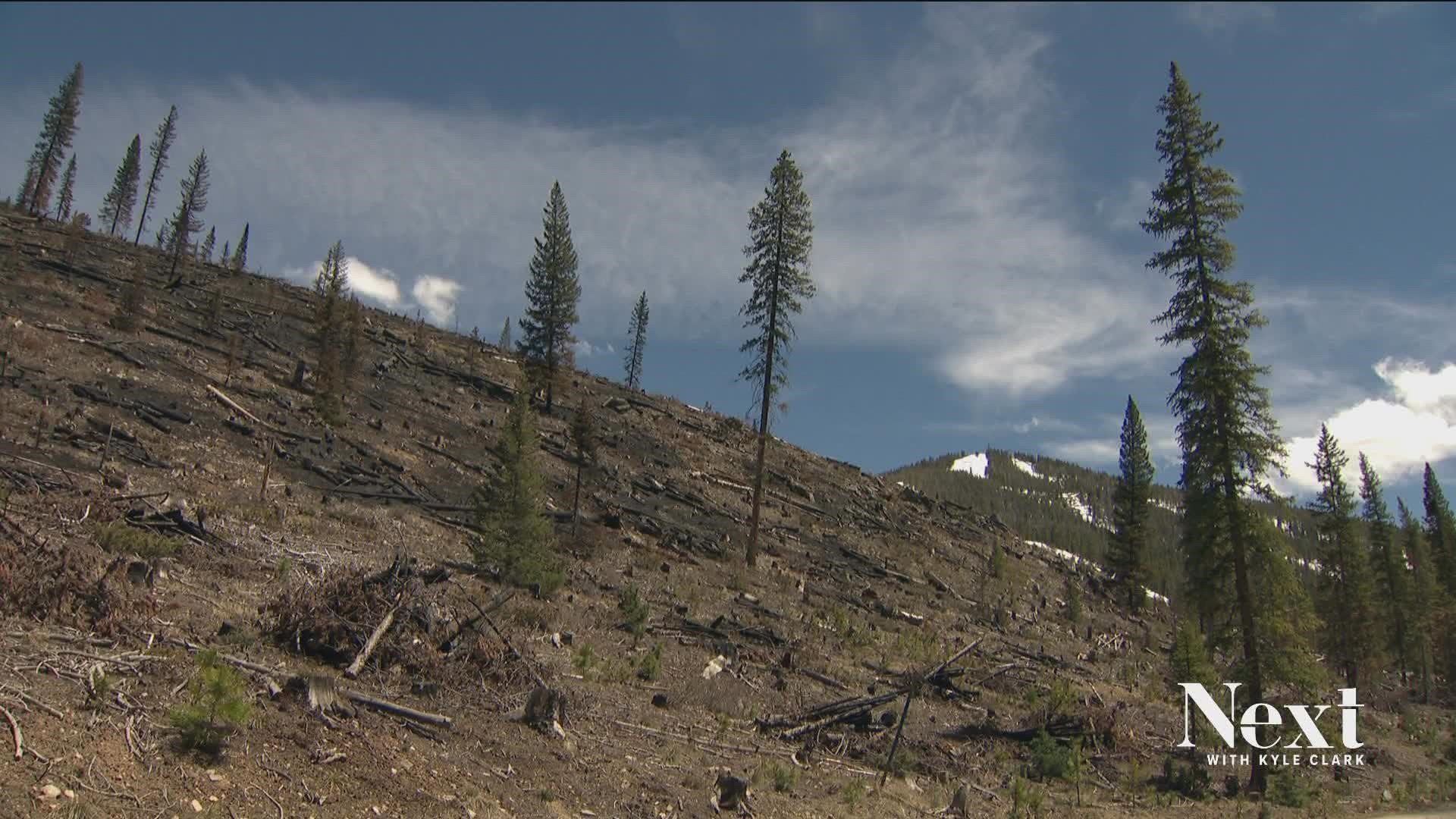DENVER — Prescribed burns are fires set on purpose to reduce the risk of more serious wildfires -- "prescribed" instead of "controlled" since there are times when those fires do things that are not controlled, like reignite.
It happened just last weekend.
A prescribed burn in the White River National Forest at Keystone Gulch reignited Saturday. The burn area was purposefully set on fire on May 4 and May 5, but on May 7, the burn area was on fire again, unexpectedly.
"We didn't necessarily plan for some of the piles to, kind of, kick back up on Saturday," said Adam Bianchi, district ranger for the Dillon Ranger District in the White River National Forest. "We burned Wednesday [and] Thursday and some of this picked back up on us on Saturday because of the high winds."
The fire did not escape the prescribed burn boundaries and was never declared a wildfire.
Is it problematic that it rekindled even though it stayed within the boundaries?
"To us, we have those contingencies in place. And so, do I love to see that it picked itself back up? Not necessarily, but we plan for those things to happen," said Bianchi. "It rekindled itself around 3:30 p.m., and so at the time, there wasn't someone physically sitting here at 3:30 p.m., but we had resources here on scene soon after."
On Wednesday, four days later, multiple fire crews were still monitoring the area for any flare ups.
"It's held since Saturday night," said Bianchi.
In March 2012, Jefferson County set a prescribed fire in the Lower North Fork area southeast of Conifer. After the burn was out, it was not properly monitored for the required three days, and reignited on day four. That fire killed three people, destroyed nearly two dozen homes and scorched more than 4,000 acres.
The fire led the state to tighten the criteria for using prescribed burns.
>Current Colorado Prescribed Burn Guide
The U.S. Forest Service has different requirements than the state, but there is plenty of overlap.
They must do a test burn, have half an inch of snow on the ground and complete a "Go/No-Go" Checklist.
"There's a lot that goes into these burn plans before we even ignite. We do test burns, as well, to ensure that we are meeting the prescription of these burns, meaning what we're looking for," said Bianchi.
The Go/No-Go Checklist asks if conditions have changed to the ignition area. And the answer is no, it's likely the fire will not proceed.
If the answer is yes, then the following have to also be answered "yes" before the test burn can be conducted:
- Have all permits and clearances been obtained?
- Have all the required notifications been made?
- Have all the pre-burn considerations and preparation work identified in the prescribed fire plan been completed or addressed and checked?
- Have all required current and projected fire weather forecast been obtained and are they favorable?
- Are all prescription parameters met?
- Are all smoke management specifications met?
- Are all planed operations personnel and equipment on-site, available and operational?
- Has the availability of contingency resources applicable to today's implementation been checked and are they available?
- Have all personnel been briefed on the project objectives, their assignment, safety hazards, escape routes and safety zones?
"As far as pressure goes to burn these piles, it takes us about a year for these piles to cure before we can burn them. And so, we've got piles all over the place," said Bianchi. "There's no pressure to say these needed to be burned on Wednesday versus Thursday or waiting until the fall or next spring."
When the fire was set on Wednesday and Thursday, wind was in the forecast for Saturday.
"You mentioned high winds on Saturday, but there was also calling for precipitation, as well," said Bianchi. "We were aware of the winds, but we had a lot of contingency in place knowing, as you came up the road you could see all the other treatment that was also done. We had snow coverage on all sides. We felt really comfortable, we had been burning earlier in the week. We were monitoring after. We weren't seeing any issues, even with the wind, so we were feeling comfortable with our operations."
He said the prescribed burn will help protect the homes at the base of the area and protect Keystone Resort. It can create a fire break and slow a wildfire.
"There's a lot of value in reducing the fuels off the landscape, and there's still risk associated with it, but that's what we do, that's our job," said Bianchi,
In 2022, the White River National Forest have had 39 days available to burn. Of those 39, the burn was never scheduled on 31 days because of unfavorable conditions. Of the remaining eight days, the burn was given a 'go' on seven of them, but a 'no-go' on one of them.
"We called off more days than we actually do burn," said Bianchi. "We have a small window and most days we are unable to do that."
SUGGESTED VIDEOS: Full Episodes of Next with Kyle Clark

